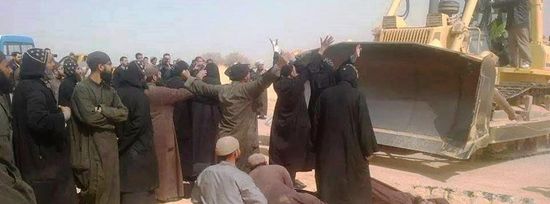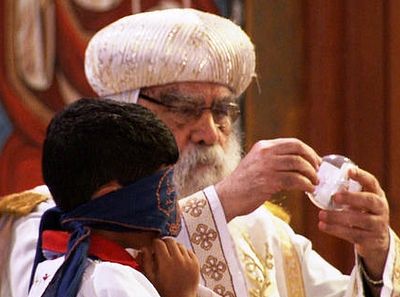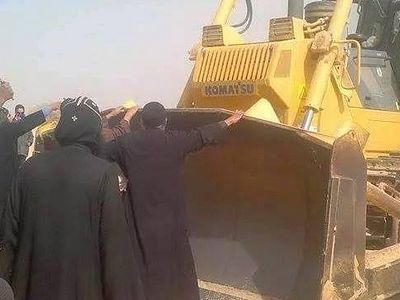March 15, 2015
A decades-long battle for control of the St. Macarius of Alexandria Monastery in Fayoum may have finally drawn to a close on Friday, with the rogue monks that walled the monastery off to the world finally conceding power to the Coptic Orthodox Church — and, hence, the state.
The dispute dates back to the 1960s, according to Ishaq Ibrahim, a researcher on religious freedoms at the Egyptian Initiative for Personal Rights (EIPR).
As Ibrahim shows in a timeline posted to his Facebook page, a group of 10 monks first built the monastery in Fayoum’s Wadi Rayan area between 1960 and 1969. They established a number of residential buildings and a small chapel, only to abandon them at the end of the decade due to harsh living conditions.
In 1996, a new group of monks rehabilitated the area, which had been declared a natural reserve and thus fell under the Ministry of Environment’s jurisdiction. Security forces reportedly clashed with the monks when they brought construction materials into the reserve to build three new churches atop the original structures, which had fallen into ruin.
The late Pope Shenouda III was reluctant to intercede due to a dispute he had with the monks in question, according to Ibrahim. Moreover, the church had not officially recognized the monastery.
“Following the January 25 revolution, the monks seized large areas of the Wadi Rayan reserve and built an 8 km-long wall isolating a number of natural springs and hundreds of acres of land. Another battle ensued between the monks, the Ministry of Environment and local residents over control over the land,” Ibrahim continued.
“After Pope Shenouda died, the newly appointed Pope Tawadros II attempted to solve the problem by assigning a new abbot to the monastery,” Ibrahim explained. “But the monastery possessed huge financial potential, and the monks were divided between those determined to maintain its independence, and a group that supported the abbot tapped by the pope.”
Though the new abbot was assigned in 2012, the church still didn't officially recognize the monastery.
In April 2013, a contract was drawn that granted the state full control over the lands of the reserve, giving local residents the right to use the natural springs for touristic purposes. The monks reserved the right to use the monastery’s facilities to practice religious rituals and carry on with activities necessary to maintain their livelihoods.
The reserve’s administration also built a number of gates in the wall around the monastery area to allow public access, under the supervision of the authorities. The contract also mandated that the monastery desist from construction or agricultural work inside the reserve.
But the conflict reignited in November 2014, when the Ministry of Transportation embarked on a project to build a road crossing through the monastery’s lands. Several monks reportedly objected, claiming that the project was motivated by sectarian politics. When the church dragged its feet in responding to the problem, the monastery’s administration accused the pope of cooperating with the state in order to avoid confronting sectarianism, Ibrahim said.
In response, the Coptic Church disavowed the monks and declared its support of the state’s development projects for the “greater good” of the country.
But the monks refused to uphold the church’s decision. In February 2015, photos circulated on the internet showing the men forming a human shield as tractors prepared to clear their land.
On Wednesday, the pope’s office issued a statement affirming that the monastery was never official recognized by the church, and granting the government the full authority to deal with the matter as it saw fit, “while preserving the historical and archaeological nature of the area, its sanctuaries and wildlife.”
The church disavowed six of the monastery’s residents “for their unjust actions, which do not represent monasticism that is based on obedience and the vow of poverty.”
On Friday, however, the battle seemed to draw to a close when the vanquished monks issued a statement announcing their full obedience to the Coptic Orthodox Church as represented by Pope Tawadros II, the state-owned newspaper Al-Ahram reported.
The monks plead with the pope to send a representative to the monastery to discuss the matter, “due to the presence of a number of monks who harm the image of the monastery, break the vow of obedience to the pope and speak in a manner not befitting of the monasticism,” read the statement, which was published on the monastery’s Facebook group.
The monks also denied any affiliation with a previous statement released by one of the monks, “as it only expressed his personal opinions and doesn’t speak for the entirety of monastery,” Al-Ahram reported.




